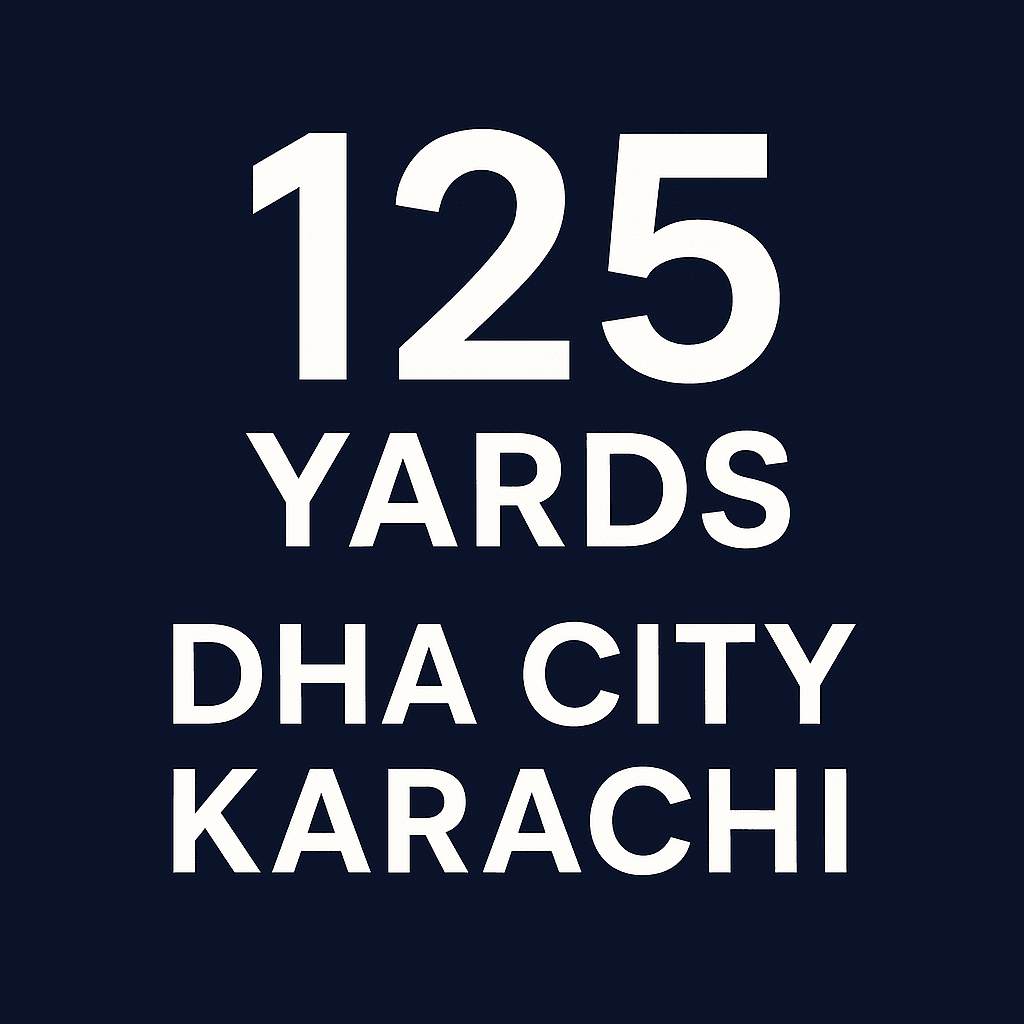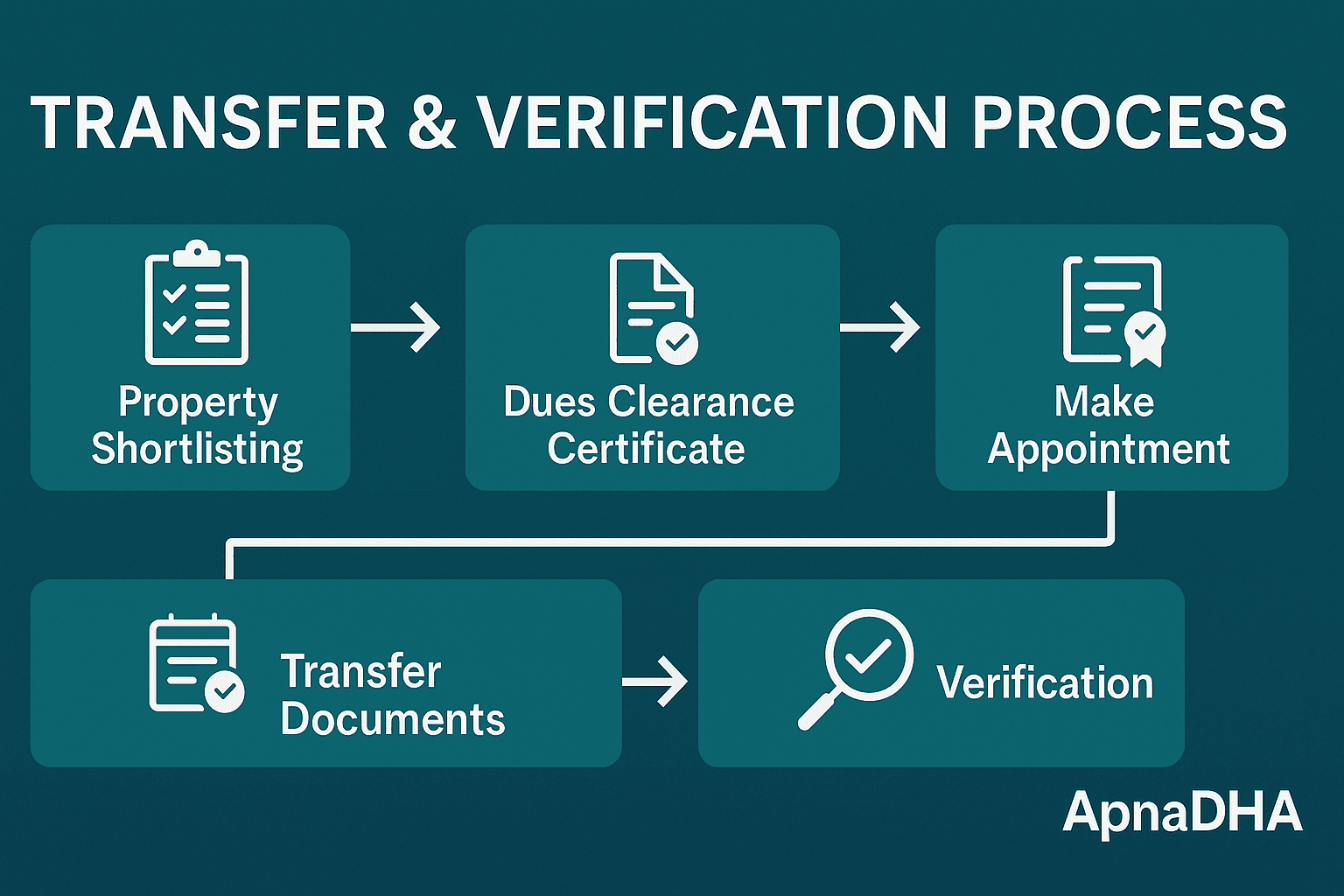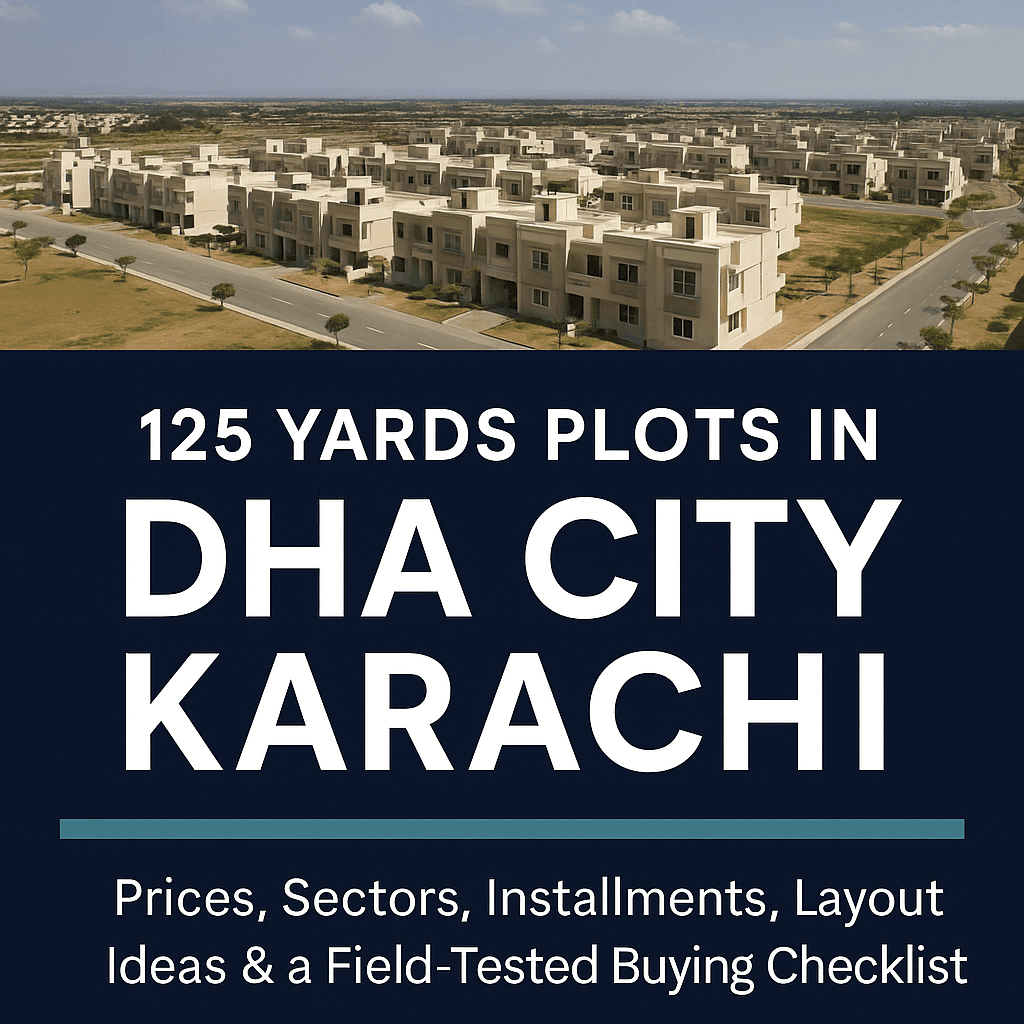Last updated: September 18, 2025
Why 125 Yards Plots DHA City Karachi is the smartest entry
For most first-time DHA City Karachi (DCK) buyers, 125 sq yds is the sweet starting point. You get DHA’s planning standards, a genuinely buildable footprint for a compact 3–4-bed home, and importantly, high liquidity when you need to exit or upgrade. Holding cost is lighter, construction finishes can stay premium without breaking the bank, and timelines remain realistic for working families.
Four reasons end-users love 125:
- Lower ticket, DHA credibility — safer entry than fringe schemes with unclear paperwork.
- Faster build — compact area means fewer months on site and easier supervision.
- Resale comfort — the widest buyer pool sits in the affordable bands.
- Design efficiency — smart planning turns a small plot into a very liveable home.

Who should shortlist 125 Yards Plots DHA City Karachi (personas)
- First-home families wanting ownership stability and predictable monthly costs.
- Smart investors looking for liquid inventory to trade or to build-and-sell quickly.
- Parents building for children (future marriage/studies) with a manageable budget.
- Downsizers moving from larger houses to easier maintenance without leaving DHA’s ecosystem.
Sectors & micro-locations: where to start looking
Inventory rotates, but entry-focused pockets are typically where you see recurring activity in 125 yards. Begin with Sector 14 (A/B pockets) for affordability and momentum, then broaden into pockets of Sector 13 and selectively into Sector 6/11 where the street grid and amenities appeal to families. Always verify on-ground status—street width (ROW), park/masjid proximity, paving, lighting, and vigilance presence matter as much as the map.
How to do a 2-visit test (works every time):
- Mid-day: check heat, noise, truck/bus movement and general street behavior.
- Sunset: feel breeze, observe park activity and headlight glare, confirm night lighting.
Want a curated 125-yd shortlist (paper-verified) with quick walk-through videos?
Price & demand snapshot (how to “read” 125 Yards Plots DHA City Karachi)
- Premium attributes — park-facing, corner, west-open. Price them within the same street hierarchy; don’t drag comps across sectors.
- Ready-to-build pockets trade higher but shrink your holding time and uncertainty.
- Full-paid vs dues-remaining — model the total outlay (remaining dues, any penalties, and time value). A cheap ask isn’t cheap if the carry eats your savings.
- Real comps beat hearsay — ask for same-corridor trades from the last 60–90 days (token/receipt references where possible).
Installments in 2025: realistic paths for 125 Yards Plots DHA City Karachi
For entry sizes, developer releases tied to DCK (such as the Indus Hills launch in 2025) have showcased structured down-payments and multi-year, quarterly schedules on residential sizes that include 125 Yards Plots DHA City Karachi. Treat any private “installment” pitch as noise unless the schedule, receipts, and verification align with DHA-recognized flows. If liquidity matters more than build-now speed, a sanctioned plan can be sensible; if you want to break ground soon, a full-paid or clean dues-remaining plot in a ready pocket is usually smarter.
Rule of thumb: prefer the path with fewest unknowns (clear possession/utilities, verifiable receipts, unambiguous dues).
Access & commute (for site visits and daily life)
DCK sits along the M-9 corridor. Your real-world travel feel depends on the gate you use and the pocket you’re visiting. For first tours, cluster 3–4 plots within adjacent pockets to avoid zig-zagging; plan off-peak timings for both directions. Log distance + time in each pass—you’ll use this data during negotiation when sellers claim “5 minutes from gate” (rarely true for all pockets).
Carry a printed sector map extract with pegs marked; plot mix-ups are common when street names look similar.
Floor-area magic: how to make 125 yards live big
Planning goals: remove dead corridors, keep circulation tight, and maximize usable walls for wardrobes and kitchen storage.
A. Ground floor (family-first)
- Porch for one car (optimize turning radius at the gate).
- Drawing tucked up front with a pocket powder; sliding door lets it merge with dining for events.
- Open kitchen + family lounge as a single social volume; breakfast ledge doubles as homework station.
- Guest/parents’ bedroom with a compact wardrobe wall and clever under-stair storage.
- Service yard (laundry + outdoor sink) concealed from the lounge sightline.
B. First floor (privacy)
- Two or three bedrooms (one can flex as a study).
- Shared bath with stacked plumbing over the ground floor to cut costs.
- Tiny terrace with a pergola/screen for shade and privacy.
C. Climate & noise comfort
- Deep overhangs and a ventilated façade on sun-hit elevations.
- Breeze strategy: many families prefer west-open for cross-ventilation—just manage heat with shading, glazing and trees.
- Acoustic sanity: specify solid doors and seal the kitchen/laundry paths.
D. Future-proofing
- Keep shafts aligned for a compact lift later (aging parents).
- Pre-run solar/inverter and EV conduits; upgrading later becomes plug-and-play.
- Photograph concealed services (MEP) at handover; this helps future maintenance and resale.

A field-tested shortlisting framework (save this)
- Street hierarchy: one–two turns off the main corridor = quieter living, easier resale.
- ROW & geometry: perform an SUV three-point turn test; tight today becomes tighter once neighbors wall their plots.
- Orientation:
- West-open = breeze; mitigate heat with shading/landscape.
- Corner = light/parking; check for cut-through traffic.
- Park-facing = lifestyle/resale; verify evening activity and headlight glare.
- Plot level & drainage: stand at the lowest corner; observe water path after a wash/rain. Note fill/compaction—this is a negotiation lever.
- Surroundings: count under-construction sites; dust/noise affect comfort and rental viability.
- Paper chain: allotment/transfer history, seller CNIC, dues/utility receipts.
- Verification: confirm payments/acknowledgements through the official portals before token; screenshots ≠ documents.
- Utilities & possession: insist on written statuses/timelines.
- Comps discipline: price off 3–5 same-corridor trades (60–90 days).
- Token terms: refund triggers, exact cheque numbers, transfer window, and fee responsibility—all in writing.

Due-diligence pack (checklist you can print)
- Sector map extract with pegs marked
- Buyer/seller CNICs; POA documents if applicable
- Allotment/transfer chain copies
- Latest dues/utility receipts; any surcharge letters
- 3–5 same-corridor comps with dates and reference numbers
- Token/earnest receipt with conditions and timelines
- Site photos/video (plot + immediate neighbors)
- Your visit log (distance/time, route, traffic observations)
Installment vs cash: decision matrix for 125 yards
Choose installments when…
- You need liquidity smoothing and are buying into a published, DHA-recognized plan with clear receipts and verification.
- Your build horizon is long and you’re comfortable with phased possession.
Choose full-paid (or clean dues-remaining) when…
- You want to build soon in a ready pocket.
- You want price leverage: many sellers concede for quick, clean transfers.
- You prefer fewer moving parts (no schedule penalties, fewer admin trips).
Hybrid play: Take a dues-remaining plot only at a real discount, modeled against total future payments and your cost of capital. Keep every payment on traceable rails (bank + official acknowledgements) to protect your eventual transfer.
Transfer & timelines (what to expect)
In clean cases, plan about 1–2 weeks end-to-end. Typical stages include file verification, biometric/appointment, fee payment, NOC, and final transfer. The fastest files are the ones with complete paper chains, cleared dues, and token terms that were crystal clear from day one. Keep duplicate sets of everything and staple the map extract with pegs to your file—small discipline, big speed.
Ten mistakes 125-yd buyers make (and how to avoid them)
- Pricing off cross-sector comps — every corridor trades differently.
- Avenue-front glamour buys — ingress/egress and noise crush daily life and resale.
- Skipping a second visit — evenings reveal breeze, park activity and lighting realities.
- Assuming “park-facing = always best” — check privacy, parking pressure and headlight glare.
- Basement dreams without soil data — on 125 yds, smarter to invest in shading/MEP/insulation first.
- Tokening on screenshots — verify receipts/acknowledgements through official channels before money moves.
- Under-budgeting utilities — lock written timelines and who pays what.
- Porch/gate afterthought — turning radius and gate design define daily comfort.
- Over-decorating the façade, starving MEP — noise/heat later will punish you more than a “simple” elevation ever will.
- No exit thinking — keep finishes neutral and maintenance-friendly; keep a photo log of concealed services for future buyers/valuers.
Sample budget lens for a 125-yd home
- Land: ask vs same-corridor comps (adjust for park/corner/west-open and for leveling/approach quirks).
- Construction: quality MEP (electrical/acoustic/thermal) before fancy cladding; prioritize kitchen/joinery.
- Soft costs: soil test (even if no basement), architect + structural, approvals.
- Carry: site security, temporary utilities, 10–12% contingency.
- Timeline: 8–12 months for a clean, family-spec build when approvals and contractor are aligned.
Internal links
- Pillar: Plots by Size (125–2000 Yds)
- Neighbor sizes: 200 yds • 300 yds • 500 yds • 1000 yds • 2000 yds
- Market & paperwork: Latest Prices • Payment Plans • Transfer & Fees
- Sectors to start with: Sector 14A • Sector 13A • Sector 6 • Sector 11E
Quick FAQs
Q1. Is 125 yards enough for a family?
Yes—done right, you can fit 3–4 beds, an open kitchen + lounge, and a usable porch. The key is removing dead corridors and stacking services smartly.
Q2. Park-facing vs corner vs west-open—which wins?
Depends on your lifestyle and the exact street. Park-facing is great for families; corner helps parking/light; west-open catches breeze. Always compare same-street comps before paying a premium.
Q3. Should I buy full-paid or on installments?
If you want to build soon in a ready pocket, full-paid (or clean dues-remaining) is simpler and often cheaper overall. If you need liquidity smoothing and possession can wait, a published, DHA-recognized plan is safer.
Q4. How long does transfer take?
In clean cases, expect roughly 1–2 weeks including verification, biometric/appointment, fee payment, NOC and final endorsement—subject to scheduling.
Q5. What adds the most resale value on 125 yards?
Micro-location (quiet but accessible), park adjacency, clean surroundings, and neutral, low-maintenance finishes. Paper clarity and utility readiness seal the deal.
Call or WhatsApp for a curated 125-yd short-list
ApnaDHA.com — DHA City Desk






Join The Discussion